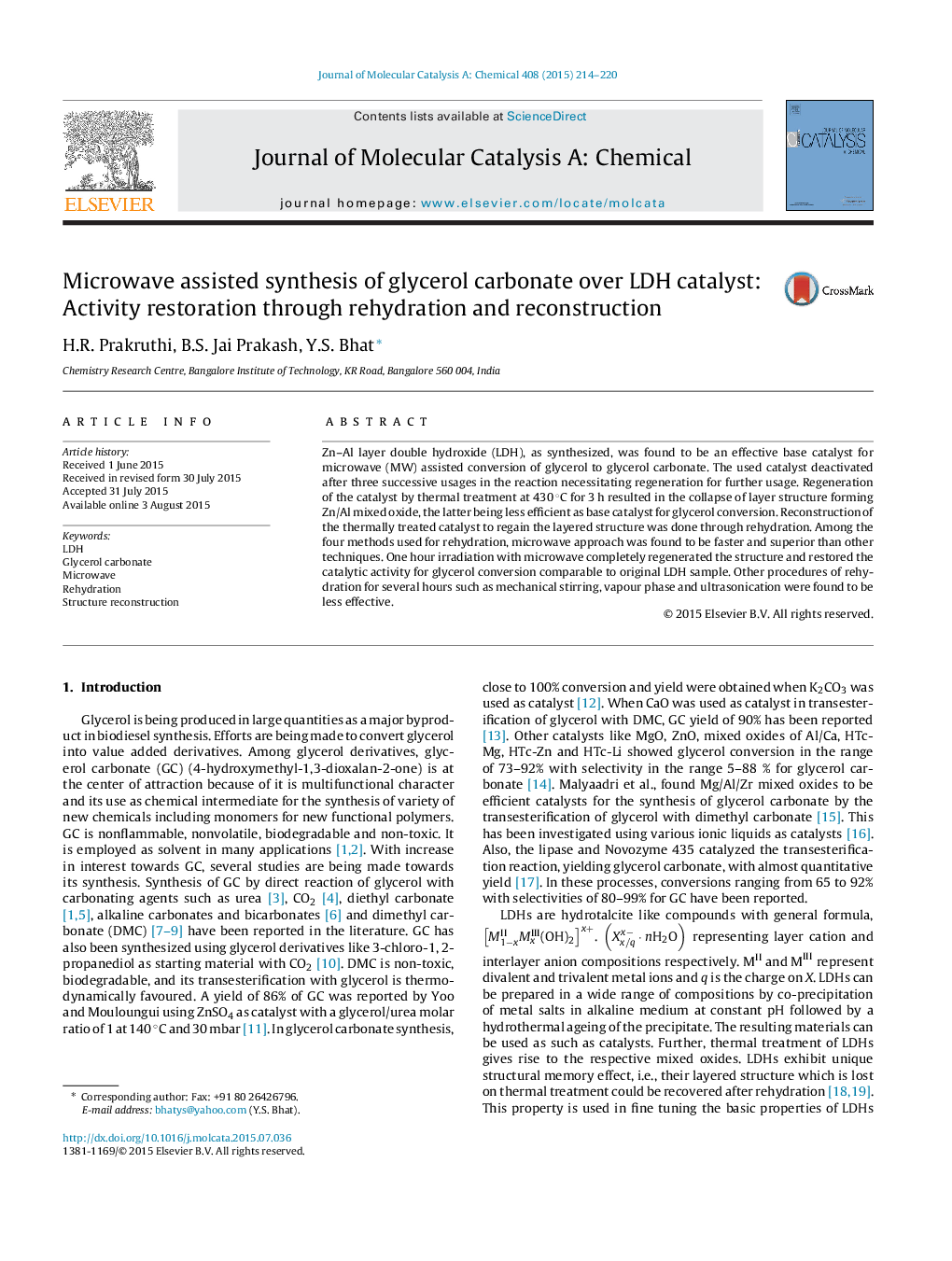| کد مقاله | کد نشریه | سال انتشار | مقاله انگلیسی | نسخه تمام متن |
|---|---|---|---|---|
| 64877 | 48373 | 2015 | 7 صفحه PDF | دانلود رایگان |

• Glycerol carbonate was synthesized over LDH under microwave irradiation.
• Used LDH catalyst looses activity partially and heating collapses layered structure.
• Reconstruction of collapsed LDH was carried out by four different methods.
• Rehydration under microwave irradiation is best method to regain original activity.
• Polar nature of water and LDH surface complementing each other in reconstruction.
Zn–Al layer double hydroxide (LDH), as synthesized, was found to be an effective base catalyst for microwave (MW) assisted conversion of glycerol to glycerol carbonate. The used catalyst deactivated after three successive usages in the reaction necessitating regeneration for further usage. Regeneration of the catalyst by thermal treatment at 430 °C for 3 h resulted in the collapse of layer structure forming Zn/Al mixed oxide, the latter being less efficient as base catalyst for glycerol conversion. Reconstruction of the thermally treated catalyst to regain the layered structure was done through rehydration. Among the four methods used for rehydration, microwave approach was found to be faster and superior than other techniques. One hour irradiation with microwave completely regenerated the structure and restored the catalytic activity for glycerol conversion comparable to original LDH sample. Other procedures of rehydration for several hours such as mechanical stirring, vapour phase and ultrasonication were found to be less effective.
Figure optionsDownload high-quality image (190 K)Download as PowerPoint slide
Journal: Journal of Molecular Catalysis A: Chemical - Volume 408, November 2015, Pages 214–220